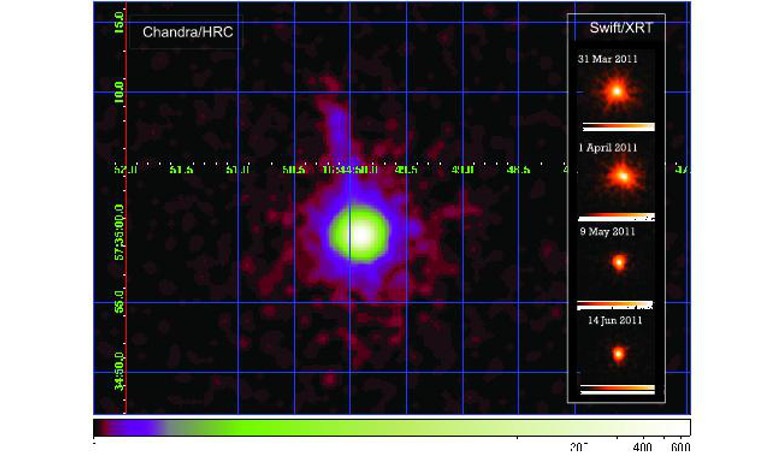Finding an object whose gravity is so strong that not even light can escape from its perimeter is no easy task. Now, however, by measuring the disintegration of a star, scientists from Moscow State University have found a new way to estimate the mass of elusive supermassive black holes located outside of the Milky Way.
Black holes are notoriously difficult; difficult to find and difficult to study. In the past researchers have inferred their existence by measuring the orbital velocity of a nearby companion star as it sped around an hidden compact object. By deducing that the mass of the object must be bigger than the upper mass of a neutron star, scientists were left with only one option; a black hole.
To try and narrow down exactly how big black holes are, scientists have looked to other means in which to measure their mass. One thing that had become apparent was that when a black hole swallows up another rather large object, the friction and heating that was generated as the object was ripped apart caused a lot of radiation to be emitted.
In the case of an unlucky star that strays to close to the devouring black hole, the process is known as a tidal disruption event (TDE). As gravity rips the star apart, some of the star’s material is flung out from the black hole, while the remainder gets sucked in. As this material is accreted onto the black hole it can reach a temperature of around 105 K whilst emitting energetic photons at optical, ultraviolet, and X-ray wavelengths.
These X-ray sources have been mistaken in the past for fast Gamma Ray Bursts (GRBs), however these energetic bursts are short-lived, while the X-ray flares on the other hand persist for a few years.
After correctly reassigning a previously misidentified GRB (Swift J1644+57) as an X-ray flare from an extragalactic source, Elena Seifina, an astrophysicist at Moscow State University, then set about studying the changes to the spectra of the X-ray flare as it increased in luminosity over time.
By noting that the flare happened to occur near the central nucleus of a galaxy and by looking at prominent peaks in the spectral energy distribution of the X-ray flare (which gave an indication to the processes that were occurring) compared with the mass accretion rate of the ripped up star, Seifina found that these features clearly indicated the presence of a black hole.
Furthermore the analysis of the data could be applied to different flares in different locations, allowing Seifina and her colleagues to "weigh" invisible black holes by comparing them with galactic black holes of known mass.
"Calculations showed that Swift J1644+57 contained a supermassive black hole with a mass of 7×106 solar masses. This is really an object that we do not see, but which provided high luminosity due to its strong gravitational field and an accretion disk around it," explained Seifina.
Seifina and team hope that the versatility of this new method will help to work out the mass of other various extragalactic objects, such as the cores of Seyfert galaxies for example, where traditional methods do not work so well.











